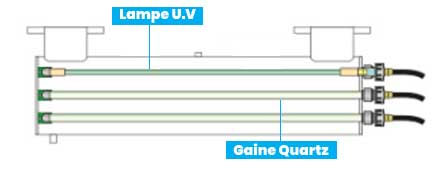Address
11 avenue Tom Morel 78210
Saint-Cyr-L'ecole
Having a well means having a water reserve, or even a source, under your land, or a dug rainwater reserve. In any case: this means that you will save water! Well water is unfit for consumption and must go through several filtrations before it can be used. There are 3 types of wells:
Groundwater is generally less polluted than surface water and has a higher flow rate. Water from catchment wells or rainwater harvesting is surface water (rainwater), polluted by various atmospheric pollutants (pesticides, etc.).
Water from boreholes, catchment wells, or artesian wells is natural water that comes from groundwater or underground water sources.
You should actually know that water coming from a borehole or a catchment potentially contains pollution by living organisms (bacteria, viruses, algae, microorganisms, etc.), or chemicals (hydrocarbons, drug residues, pesticides). , industrial pollutants, etc.).
They are dangerous for health and make water unfit for human consumption. Well water treatment can be done by 2 systems:
A system that rids well water of suspended matter is not enough to make it drinkable. The filtration system installed when the well water arrives is made up of a series of filters which retain solid particles (residues, waste) in a porous medium, allowing only fine particles to pass through.

We have adopted Filtration by Activated Carbon and Chlorine.
The water passes through the artesian well water filter, or pumped by gravity or circulation. The lower the flow rate, the better the result.
Some well water filters are designed specifically with extremely fine filtration, even finer than a microbe!
Physical filtration of 50 µm is suitable for toilets and washing machines, and 10 µm filtration is suitable for washbasins and sinks.
Activated carbon solves the problem of bad odor, in combination with chlorine disinfection for example.
Additional filters can then be installed individually on each particular water point (kitchen, shower, etc.).

Purification systems are used to disinfect your well water to reduce microorganisms. We have adopted ultraviolet purification.
UV sterilization is a 100% physical water treatment system (no chemicals) that imitates the disinfecting effects of sunlight using UV lamps.
The UV sterilization system makes any water "drinkable" (rainwater, well water, etc.). The ultraviolet rays of the sterilizer have the ability to destroy all bacteria and viruses contained in the water.
The UV sterilizer consists of one or more UV lamps integrated into a Quartz sheath. The water passes the sterilizer and circulates around the sheaths and is thus exposed to ultraviolet light. Viruses, bacteria and other micro-organisms are thus eliminated, making the water bacteriologically drinkable.
An anti-sedimentary waterfall is also installed to make the water as clear as possible.